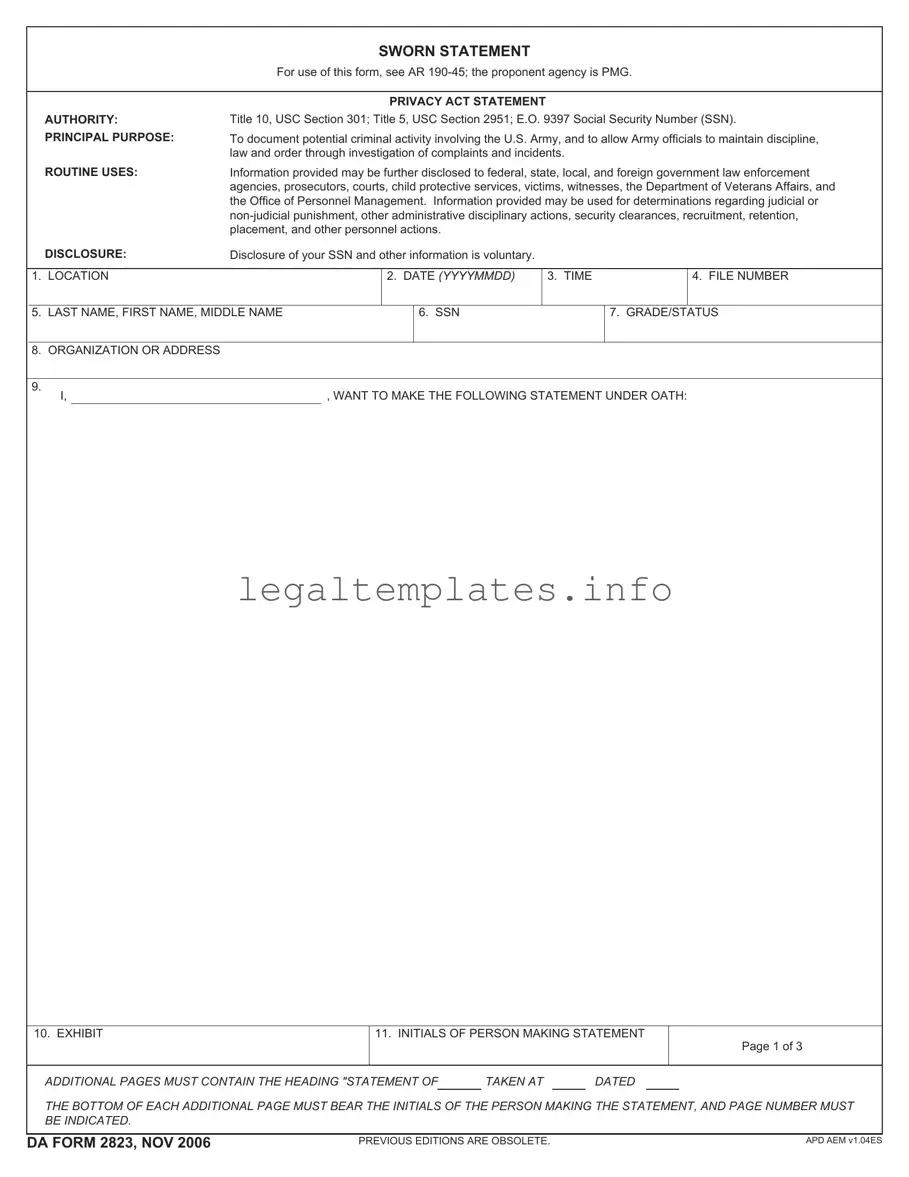The DA Form 2823, which is used for documenting sworn statements in the context of U.S. Army investigations, is quite similar to the SF 86, Questionnaire for National Security Positions. Both forms are integral to ensuring the integrity and security within the Army and other federal agencies. The SF 86 collects detailed personal information, history, and background from individuals applying for security clearances. Like the DA 2823, this process aims to identify potential risks and maintain safety and discipline through comprehensive screening and data collection.
Another document resembling the DA Form 2823 is the Incident Report Forms used by police departments. These forms are completed by officers to record the details of an incident, crime, or complaint, much like how the DA 2823 documents potential criminal activities involving the Army. Both sets of documents serve the purpose of initiating investigations, gathering evidence, and potentially leading to judicial or administrative actions based on the findings.
The Miranda Rights Form shares similarities with the DA 2823, especially in its function of safeguarding individuals' rights during legal proceedings. When someone is arrested, they are read their Miranda rights, a practice ensuring that the individual understands their rights to silence and legal representation. The DA 2823 also protects individuals by ensuring that statements are made voluntarily, without coercion, and with an understanding of the statement's content and implications.
The FD-258, FBI Applicant Fingerprint Card, is another document related to the DA Form 2823. While the FD-258 is used for capturing fingerprints for background checks, it similarly supports the vetting process for security purposes within the Army and other federal agencies. Both documents are tools in the broader framework of maintaining national security and integrity within federal services.
The DEA Form 106, used to report theft or loss of controlled substances, parallels the DA Form 2823 by aiming to document and investigate specific incidents. Both forms kickstart a formal review process, seeking to mitigate potential harm and apply corrective actions to prevent future occurrences. The documentation helps uphold discipline and order within respective environments, be they healthcare facilities or the Army.
IRS Form 3949-A, Information Referral, used to report alleged tax law violations, serves a similar investigative purpose as the DA Form 2823. Both forms collect and document information from individuals to initiate official inquiries into misconduct or illegal activities. The essential goal here is to maintain legal and ethical standards, whether in financial matters or behavior within the Army.
The OPM Standard Form 78, Certificate of Medical Examination, is used to determine the fitness of candidates for federal employment, resembling the DA Form 2823’s role in documenting information critical to personnel decisions. Both forms aim to ensure that individuals meet the required standards for their respective roles, contributing to the overall safety, security, and efficiency of federal operations.
Civilian police's Victim Statement Forms, used by victims to narrate their experience of a crime, share the DA Form 2823's goal of capturing personal accounts to aid in investigations. Both documents are vital for gathering evidence and testimonies that can lead to the resolution of a case, highlighting the importance of detailed, firsthand accounts in the justice process.
The Lease Agreement Forms, though primarily used in property rentals, share with the DA Form 2823 the principle of documented agreements. Both serve as formal records of statements or agreements, whether they pertain to property terms or sworn statements related to Army incidents. The key function is to have a written record that can be referenced for clarification, enforcement, or legal purposes.
Lastly, Human Resources' Employee Incident Report Forms, used to document workplace incidents involving staff, are similar to the DA Form 2823 in their objective of recording specific events and behaviors. Both forms play crucial roles in maintaining discipline and order by ensuring that incidents are formally documented, reviewed, and addressed accordingly, aiming to foster a safe and responsible environment.



